Section 1 Subsystems
Memory -
Memory performance is very important on a motherboard, especially when you have a CPU with multiple cores and threads. If you have slow memory your cores and threads can become starved for data to execute. To test memory performance we run both Sisoft’s SANDRA and AIDA64. These two combine to not only give us accurate numbers but to validate each other. For testing at stock speeds the memory is hard set to 1333MHz while overclocking testing is done at the highest stable speed for the voltage of 1.65v this is due to the different memory dividers for each CPU. As such, the memory speeds will vary greatly. This means that the overclocked numbers are a little misleading and while they can show a trend are really only included to show if a board has a problem with memory performance at high clockspeeds.
The Gigabyte X79-UD5 is in the top three of our test group for memory performance. It trails its bigger brother by only .14 GB/s. This is a good showing and could indicate a solid performance in most of our testing suite. The overclocked scores give us a better showing as the memory speed was increased from the base 1600MHz up to 1666MHz. 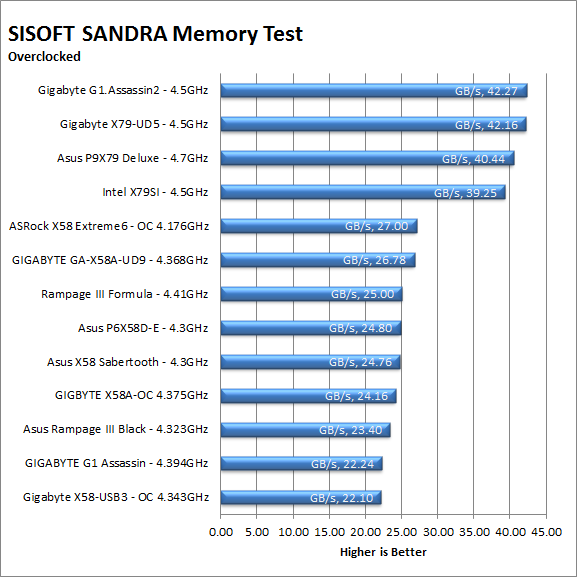
As always, our AIDA64 scores show the detail behind the aggregate scores that SANDRA offers.
| AIDA64 Stock Memory Performance | AIDA64 Overclocked Memory Performance |
 |
 |
Drive performance -
Drive performance is also one of the major subsystems that goes to make up the performance of a motherboard. For our testing we use Sandra and AIDA64 again. We only test with single drives for each type of controller present on the motherboard (unless it is a professional product where we will use RIAD 5 and/or 10). We have also begun using a Seagate PS-110 USB 3 external HDD for our USB 3.0 performance. As a side note, we include the overclocked numbers here to make sure (again) that you are not going to see a major drop in performance due to minor instabilities at high clock speeds.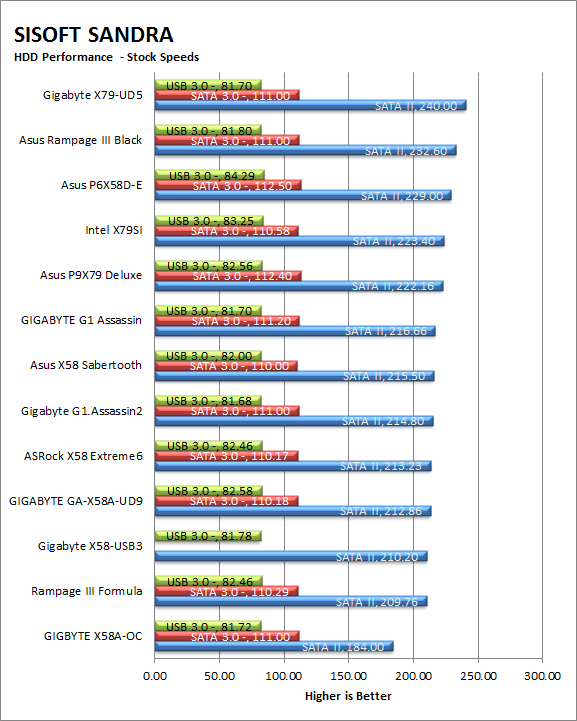
The HDD performance on the X79-UD5 is very nice. At stock speeds it manages to unseat the Asus Rampage III Black which has been at the top of our list for a long time. Unfortunately overclocking the system brought the HDD performance back down and the X79-UD5 came in third. 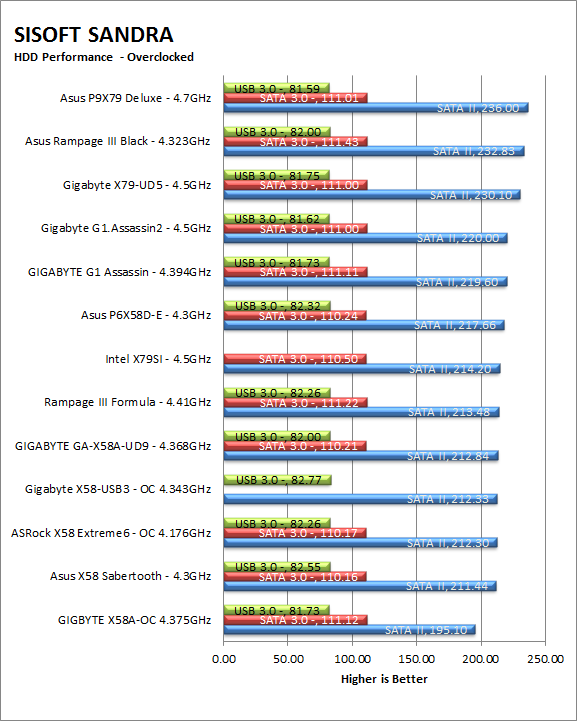
AIDA64 gives us some additional read performance numbers. Here we can see a little bit more information on the types of read functions that are going to impact your performance on the UD5.
| AIDA64 Stock HDD Performance | AIDA64 Overclocked HDD Performance |
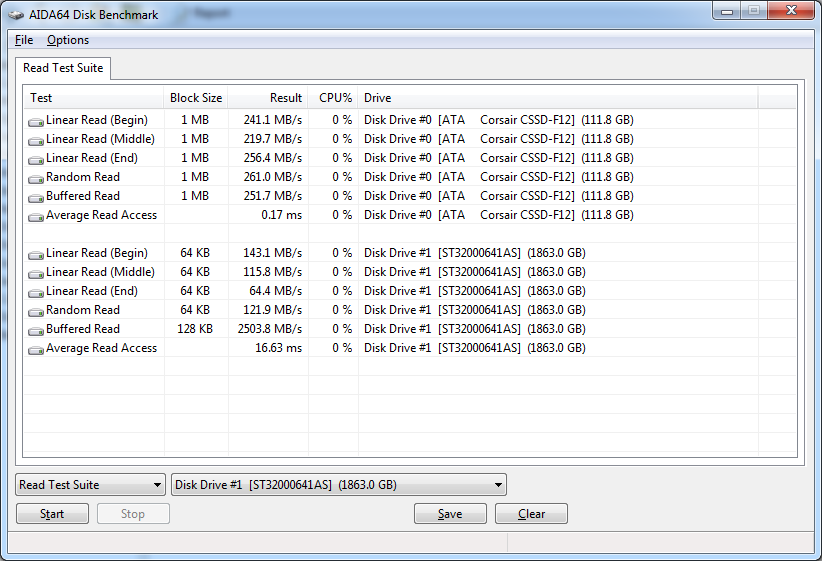 |
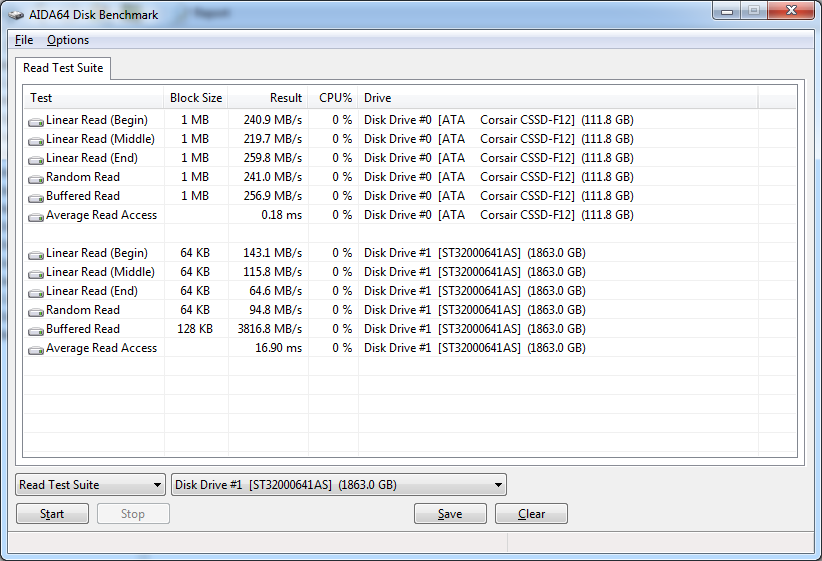 |
| AIDA64 Stock USB 3.0 Performance | AIDA64 Overclocked USB 3.0 Performance |
 |
 |
Power -
Power efficiency is another of those misnomers that we get caught up in. We hear about idle states and power gates. But what does that mean to you and I? On the surface having power management that reduces idle power sounds great and can be a benefit to someone that leaves their system on for long periods of time (and inactive) but how a system handles power under load and the delta between the two states is often more important than the idle power usage numbers. We use only P3 Kill A Watt instruments for measuring power. 
The X79-UD5 is about average when it comes to power draw. It does have one of the lowest idle power draws of the X79 boards we have tested, but once you push the board it ramps up very quickly. Our average power draw from the wall under load was 276 Watts which can add up quickly if you are trying to save money on your power bill.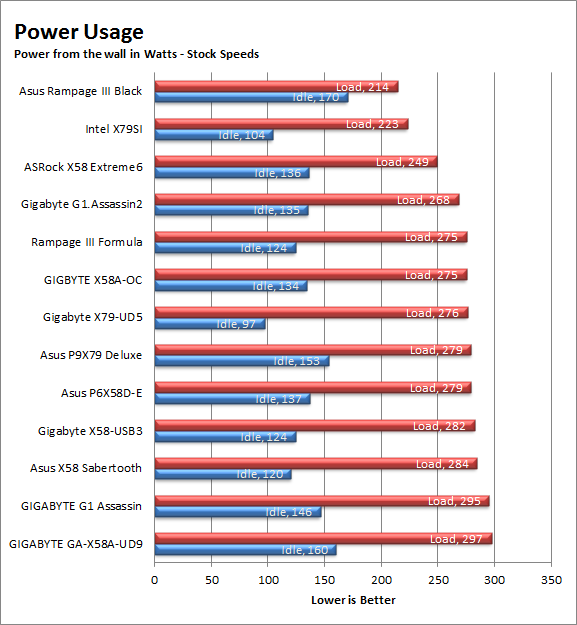
Cooling (Board Level) -
Board level cooling is an important factor in product performance and longevity. Components like the chipset, VRM modules and even capacitors need to be kept relatively cool to prevent failure. As these parts are made of silicon, they have a thermal breakdown threshold; or melting point. At that temperature the actual transistors built into chip will begin to deform and break down. Granted, the threshold is often very high, but you still need to make sure that components stay away from this level of heat for longer product life. 
The cooling on power regulation for Gigabyte’s X79-UD5 did not do so well with our Epic180 on the board. There was not enough air flow across our open test bench to keep the VRMs cool (although they were not in danger of overheating). This is something important to think about if you are planning a build using this board. Make sure the case you have chosen has good air flow or use an air cooler that can keep the air from stagnating around the top heatsink otherwise you could end up with a problem.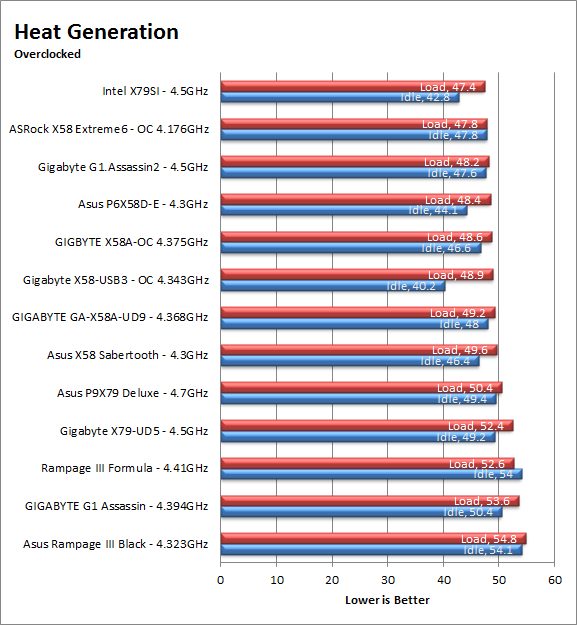
Audio -
Audio is highly subjective. What we find pleasing may sound “off” to you. That is always going to the problem with testing audio; results will vary too widely depending on the tastes of the listener. However, there are ways of measuring the audio output with an objective ear. There is also the issue of audio causing performance issues in gaming and video playback. The reason this is a potential source of concern is that all onboard audio CODECs (Compression/Decompression) are CPU controlled. This means that while the audio chip controls the audio levels and effects of the audio the actual work is done on the CPU. Usually this will not be a problem with today’s powerful CPUs. Even the lower and consumer level products can handle high-end audio these days. But again there is the chance that a bad design or software will hinder your system and performance. On the other side the limits of board space, cost, etc will also prevent the level of audio quality you can get from an add-in board. We test all audio parts with three media types, Movie (DVD), MP3 Music, and Gaming. These are pushed to our Tec On model 55 Tube Amp to see if we can detect any signal issues in the reproduction.
The audio on the X79-UD5 is a little better than most of your onboard audio. It has a clean sound thanks in part to Gigabyte’s use of Dolby Home Theater v4 software to control the audio output. Although the audio CODEC used is still a Realtek ALC898 the additional software helps to add in a level of signal processing that compensates for the brassy sound that you can get with this chip.
Networking -
This one is something that is a requirement anymore. If you have a computer, the chances are good (like 99%) that you are also connected to high-speed internet. With this you need a good and solid LAN chip to make sure that your data flows properly out and back.
The network controller on the X79-UD5 is nothing special. It will do the job and keep you connected at 1Gbps speeds, but it is not what you would call a high-performance LAN controller. It is designed with cost in mind.

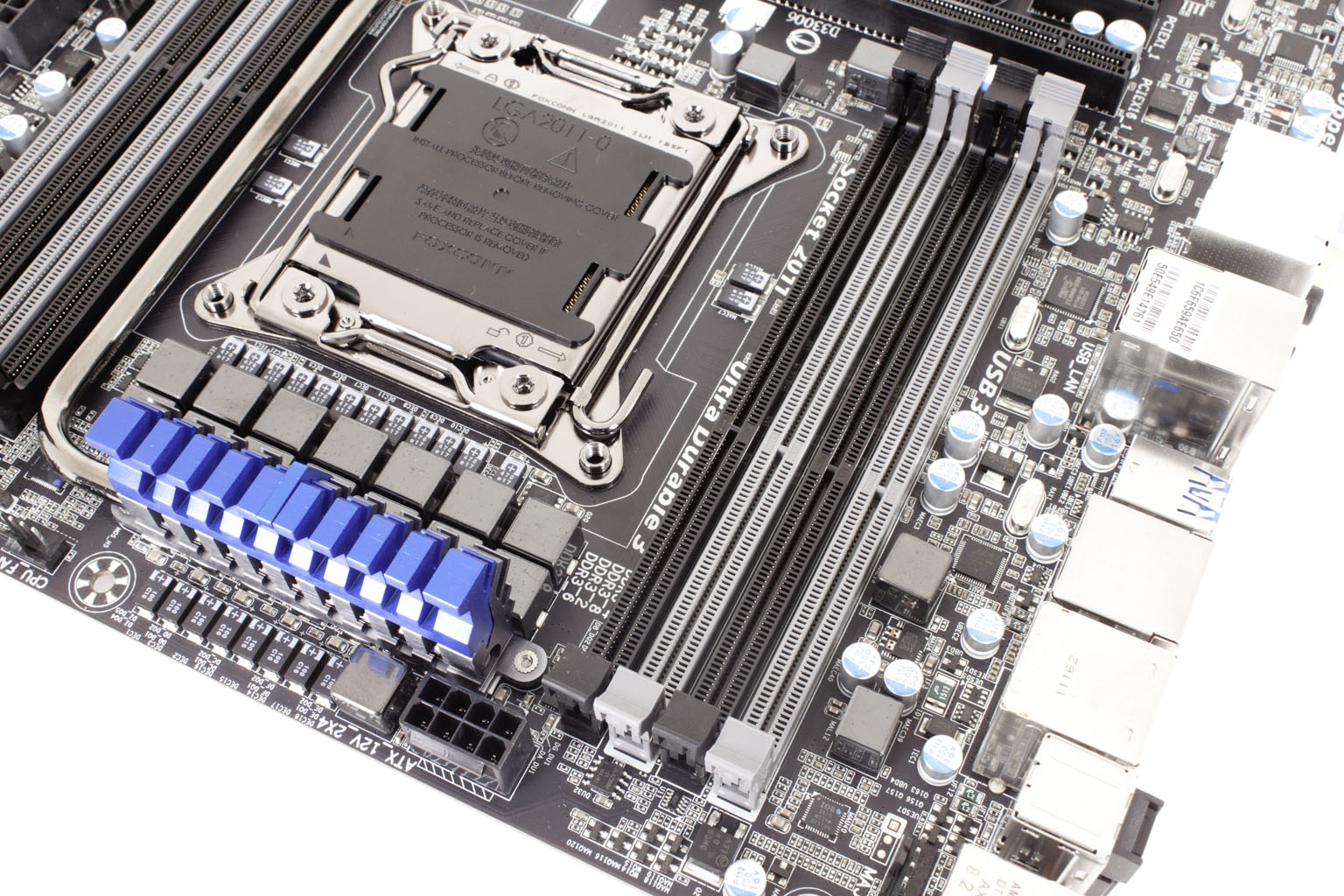 Not that long ago we talked to you about the
Not that long ago we talked to you about the 

